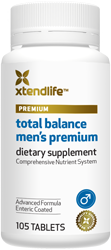The Costs Of Impotence Treatments
Erectile dysfunction, or ED, can be treated in various ways. Not all methods will give the same results to every man (ability to achieve and maintain an erection long enough to have sex) and some are far more costly than others.
This can be quite a dilemma for men once they have found a method that works - it may simply be too costly to use on a regular basis.
Many insurance plans and Medicare will not cover the cost of ED medicines. However, many surgical procedures and mechanical devices such as pumps and injections, may be covered.
The first step is to consult a doctor and have an overall health examination. You may then be referred to a urologist for further examination to discuss your options, including cost and efficacy of each option.
The Costs of Impotence Pills
As you may be aware the most popular way to treat ED is using oral medicines. These are quite expensive per use, but if the desired results are achieved, most will agree that it's worth the expense:
Viagra: up to $35-55/pill ($20-$30 generic sildenafil)
Cialis: $25-$45/pill ($2-6 for generic tadalafil)
Levitra: $35-45/pill ($2-6 for generic vardenafil)
Stendra: Not Yet Available
Lyrica: $4/pill
Propecia: $.52/pill
Kamagra: $2.75/pill
Staxyn: $25/pill
Eriacta: $1.16/pill
Even if they are affordable for you, and assuming that they are available where you live (not all oral ED medications are available in the USA) oral medications may not work - only half of the men who use oral ED drugs report success.
The good news is, there are alternatives, some of which cost nothing at all!
Try these "free" treatments first
The first defense against ED is making improvements in lifestyle and avoid lifestyle choices that promote high blood pressure or diabetes. Getting these conditions under control is essential. You must be heart-healthy enough for sex, and if you have ED it could point to much more severe conditions like cardiovascular disease and a possibility of stroke.
Lifestyle changes are for the most part free (weight loss, quitting smoking, a better diet, an increase in exercise and stress management). Some men will experience a resurgence in their ability to have sex, simply by improving their lifestyle. However, making lifestyle changes can be challenging and it takes time to see results.
The Costs of Impotence Injections, Devices and Surgery
If the pills and lifestyle changes don’t do the trick, you can try self-injected doses of alprostadil, which is a vasodilator (it helps expand blood vessels) administered via an extremely fine needle. These injected drugs are generally covered by most insurance plans, but not by Medicare.
Edex: $35/injection
Caverject: $35/injection
A generic version which includes alprostadil as well as phentolamine and papaverine, is more effective and cheaper: $2-5 per injection.
Another option is inserting penile suppositories (the size of a grain of rice) into the head of the penis. The suppository contains alprostadil, and is sold under the brand name Muse. It costs about $20-30 per suppository, and unfortunately has a rather low (30-40%) success rate.
Penis pumps, or vacuum erection devices, work by mechanically pumping blood into the penis and ‘securing’ it there via a snug ring. Prescription penis pumps cost between $300 and $600, but part of the cost (often up to 80%) will typically be covered under most insurance plans and Medicare. Nonprescription penis pumps are available as well, at a fraction of the cost: you can find them for as little as $30.
Penile implants, or prostheses, are the most invasive option. The most common implant involves surgically implanting two cylinders inside the penis and a fluid-filled reservoir in the abdomen. The pump used to fill the reservoirs and a deflation valve are both placed in the scrotum.
This mechanical means of achieving an erection is effective, and may (if covered by your insurance) be the most cost-effective as well. Most insurance plans and Medicare cover the costs, so the patient’s out of pocket costs are minimal and the implants will typically last 10-15 years. These have a high satisfaction rate among users and once implanted, there is no cost per use.
Some men experience ED because of emotional or psychological problems such as depression. Sex therapy counseling or psychological counseling may help - these therapies vary widely in cost, and not all insurance plans cover the cost of psychological or sex counseling.
Vascular reconstructive surgery is typically a last-ditch resort and is usually only advisable for men who have suffered a trauma to the penis. It is extremely difficult to perform, very costly, often ineffective (only a 5% long-term success rate) and can lead to serious complications.
Some final thoughts on impotence treatments
The efficacy of pills and injections may be hindered by alcohol use or emotional/psychological stress, making these a potentially costly solution that may not even work. Pumps work some of the time, but their effect is short-lived and many men simply don’t like them. Prostheses, or implants, are predictable, safe and last as long as you want them to.
No matter which option you choose, you can be assured that your ability to achieve orgasm is maintained.
And, there is more good news. Plenty of research is being done, and new drugs are awaiting FDA approval for use in the United States. These include gene therapy, creams (similar concept to the injection and suppository therapies), apomorphine (which stimulates dopamine production) and melanocortin activators that work via the nervous system. None of these therapies are currently available in the United States and their safety and efficacy is still being researched.
Featured Men's Health Supplement

Check out Total Balance Men's Premium today!
Search Our Site
| advanced |
Popular Articles
Alcohol and ED
What causes impotence?
Best Natural Treatments
Non-Drug Options
Vitamins that can help
Foods that can cause ED
Erectile Dysfunction Age


